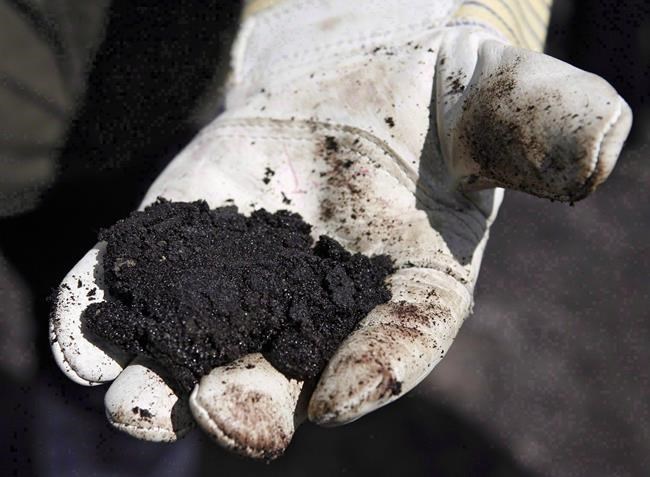CALGARY — Oil from Western Canada is once again trading at a significant discount compared to global prices, and some experts say recovery isn't expected until later in 2023.
While a barrel of Alberta oilsands heavy crude typically trades for less than a barrel of higher-quality, light sweet product, the differential between the two has blown wide open in October.
As of Friday, the difference between the price of Western Canada Select (WCS) and New York-traded West Texas Intermediate (WTI) was approximately US$25 per barrel. (A differential of about US$15 per barrel is more typical, a Scotiabank report pointed out.)
In mid-October, WCS was trading for approximately US$32 per barrel less than WTI — the most severe price differential Canadian oil producers have had to contend with since 2018, when a lack of pipeline capacity out of Canada led to a glut of inventory and took a bite out of the sector's profitability. The situation then was so serious that the Alberta government instituted a curtailment policy to curb production levels in the province and reduce the price discount.
"In 2018, it was super simple. We didn't have enough pipelines, and that was a huge political problem," said Rory Johnston, energy analyst and founder of the Commodity Context newsletter, in an interview.
"This time, it's much less obvious what exactly is driving it."
Johnston added in 2022, the factors weighing on heavy crude have more to do with a series of unplanned refinery outages in the U.S. Midwest, which have lessened the ability for operating refineries to take on excess barrels.
As well, the U.S. government's decision to release more oil from its Strategic Petroleum Reserve added to the downward price pressure, as did concerns earlier this month that a too-dry Mississippi River might make it difficult for refiners to ship product by barge.
Scotiabank analyst Jason Bouvier said he expects to see continued weakness in heavy oil prices throughout the winter, easing in the latter half of next year as additional refinery capacity comes on-stream.
The Trans Mountain pipeline expansion project is also expected to be up and running in late 2023, which should result in significant excess pipeline capacity and help the WCS differential to normalize, Bouvier said in a report.
Bouvier added the companies with the most exposure to heavy oil prices include MEG Energy Corp., Imperial Oil Ltd., and Cenovus Energy Inc.
"However, should the share prices of these companies materially weaken it will likely represent a good entry point into names that should provide exposure to strong medium and longer-term pricing," Bouvier said.
This report by The Canadian Press was first published Oct. 21, 2022.
Companies in this story: (TSX:MEG; TSX:IMO; TSX:CVE)
Amanda Stephenson, The Canadian Press



